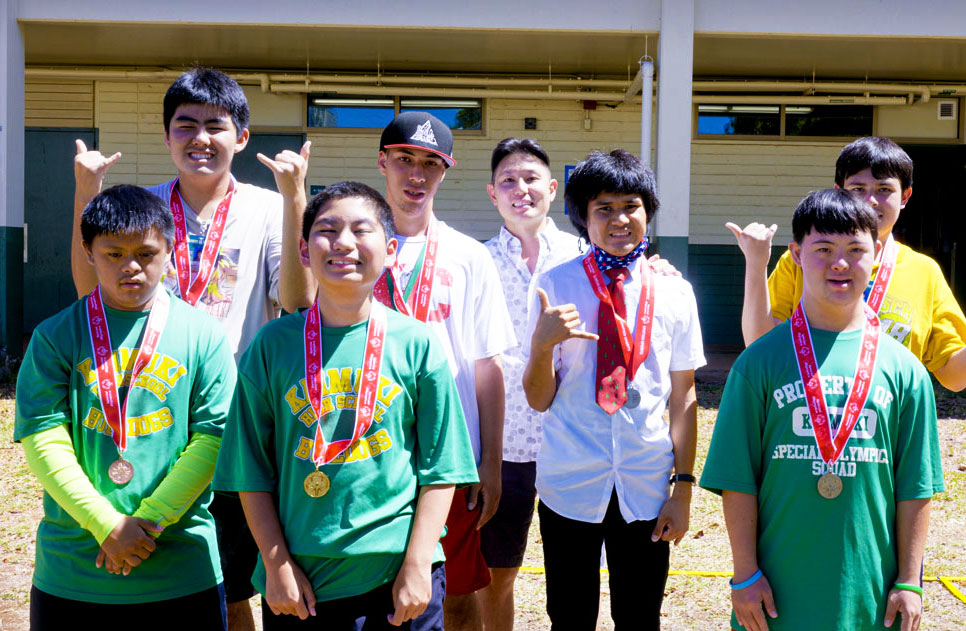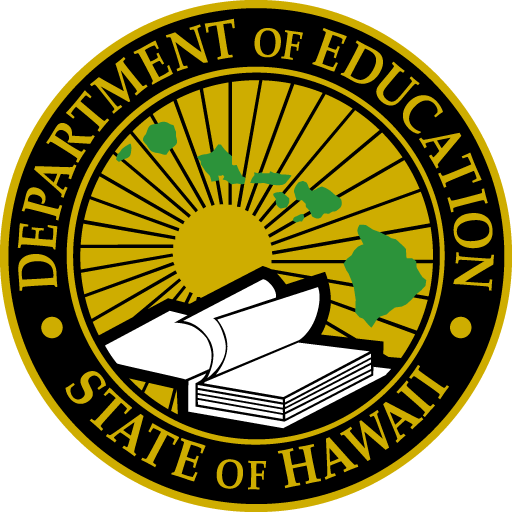The Hawaiʻi State Department of Educación (HIDOE) provides services to children ages 3 through 21, residing in Hawaiʻi, who are eligible for educación especial y servicios relacionados. Special education is specially designed instruction, related services, and other supplementary aids to meet your child’s unique needs—at no cost to parent(s).
descripción general
Special education refers to a range of services provided your child with disabilities to improve their educational outcomes. It is specially designed instruction to meet the unique needs of your child with disabilities. Special education may include, but is not limited to, academic services, speech-language services, psychological services, physical and occupational therapy, counseling services, and parent education. In addition, educación especial services are provided at no cost to parent(s). Find out if Educación especial Is it for your child? (PDF).
Special education services are made available to any student — ages 3 through 21 — who demonstrates a need for specially designed instruction after an eligibility determination. An evaluation will determine the nature and extent of the student’s needs. Evaluations are separate assessments that may include: academic performance, communication skills, general intelligence, health, vision, hearing, social and emotional status, and motor abilities. If your child is eligible for educación especial, services are provided through an Individualized Educación Program (IEP).
The federal Individuals with Disabilities Educación Improvement Act of 2004 (IDEA) and state regulations require the HIDOE to provide a free appropriate public education (FAPE), which includes a continuum of services for your child who is eligible for educación especial y servicios relacionados.
Evaluación y elegibilidad
Special education is intended for students who have disabilities that cause difficulty in learning and need specialized instruction.
Evaluation is defined as the procedures used to determine if your child has a disability and the nature and extent of the need for educación especial and related services. This process helps identify learners who are eligible for educación especial and related services by determining the presence of a disability and the need for educación especial services. There are specific timelines that teams must follow for the evaluation process.
Appropriate referrals for educación especial begins after supportive instructional practices have occurred and the student needs far more than the classroom teacher can provide through general education support. For example, a student who has significant academic and/or behavioral challenges and continues to display a lack of progress despite increasing levels of intervention.
Determination of Disability for Educación especial
Los equipos deben:
- Realizar una evaluación
- Complete la prueba de tres pasos
- Consider your child’s educational progress and the interaction between the disability
- Determine the educational impact of that disability
- Decide the need for educación especial
This important distinction highlights that the disability label alone does not prompt a determination of eligibility for educación especial. In the context of educación especial eligibility, the disability label has no standing without reference to impaired educational progress as a result of the disability.
Prueba de tres puntas
Each prong must be met before the team can determine that if your child is eligible for educación especial.
- Punto 1: Discapacidad – ¿Su hijo tiene alguna discapacidad?
- Punto 2: Efecto adverso – Is the disability adversely affecting your child’s involvement and progress in general education?
- Punto 3: Necesidad – Does your child need educación especial and related services due to their disability?
Individualized Educación Programa
An Individualized Educación Program (IEP) is a written statement about the educational program for your child with a disability. It serves as a management tool to ensure that your child receives the needed educación especial and related services. It can also serve as an evaluation tool when used to determine the extent of their progress toward accomplishing projected goals.
Cada IEP incluye:
- A statement of your child’s present levels of academic achievement and functional performance
- Una declaración de objetivos anuales, incluidos los objetivos instructivos a corto plazo.
- A statement of the specific educación especial and related services to be provided
- The extent that your child will be able to participate in regular educational programs
- Las fechas previstas para el inicio de los servicios y la duración prevista de los mismos.
- Criterios objetivos adecuados y procedimientos y calendarios de evaluación para determinar, al menos anualmente, si se están logrando los objetivos
Beginning at age 14 (or younger if determined appropriate by the IEP team), the IEP shall include a statement of the transition service needs of your child—under the applicable components of the their IEP—that focuses on their courses of study (such as participation in a vocational educational program).
A más tardar a partir del primer IEP que entre en vigencia cuando su hijo cumpla 16 años (o antes si el equipo del IEP lo considera apropiado), el IEP debe incluir:
- Metas postsecundarias mensurables y apropiadas basadas en una evaluación de transición apropiada para la edad
- Los servicios de transición (incluidos los cursos de estudio) necesarios para ayudar al estudiante a alcanzar esos objetivos.
- Evaluaciones de transición apropiadas para la edad basadas en las necesidades individuales de su hijo que se utilizarán para determinar objetivos postsecundarios mensurables apropiados
- A más tardar un año antes de que su hijo alcance la mayoría de edad según la ley estatal (18 años de edad en Hawái), su IEP debe incluir una declaración de que el estudiante ha sido informado de sus derechos bajo la Parte B de IDEA, si los hubiera, que se transferirán a su hijo al alcanzar la mayoría de edad.
La siguiente Los participantes deben estar presentes en una reunión del IEP (PDF):
- A representative of the public agency, other than your child’s teacher, who is qualified to provide, or supervise the provision of, educación especial
- The child’s teacher
- Uno o ambos padres/tutores legales
- Su hijo, si corresponde
- Otras personas a discreción del padre o la agencia.
Reuniones del IEP
Las reuniones del IEP deben realizarse al menos una vez al año. Según las necesidades y el progreso de su hijo, es posible que se celebren reuniones de revisión y revisión con mayor frecuencia.
Si bien las reuniones del IEP generalmente son iniciadas y dirigidas por la escuela, es apropiado que los padres soliciten una reunión del IEP cuando creen que su hijo no está progresando satisfactoriamente o sienten que hay un problema con el IEP actual.

¿Mi hijo tiene una discapacidad?
Niño Encuentra is HIDOE’s process of identifying, locating and evaluating children and youth who have been identified as or are suspected of having a disability and may need educación especial and related services. If you suspect your child may have a disability, we are here to help. Más información
